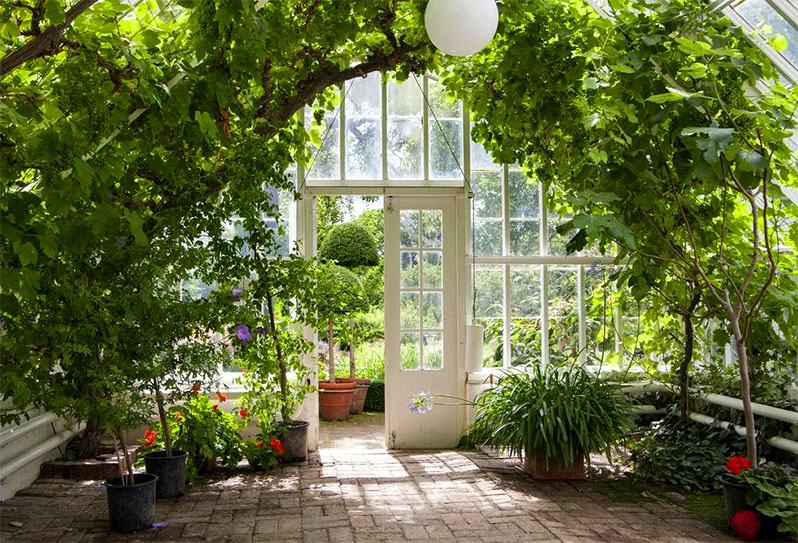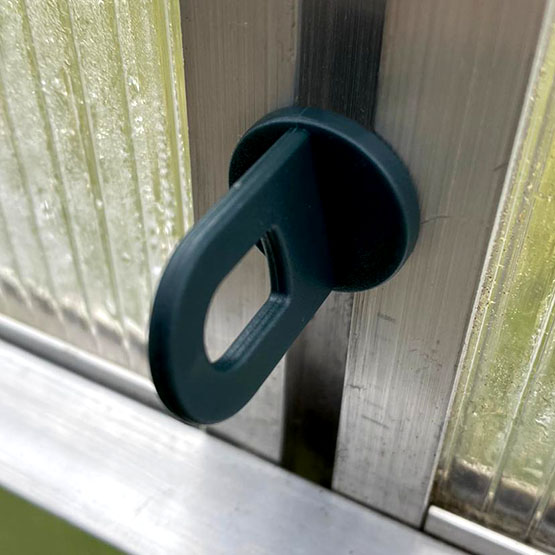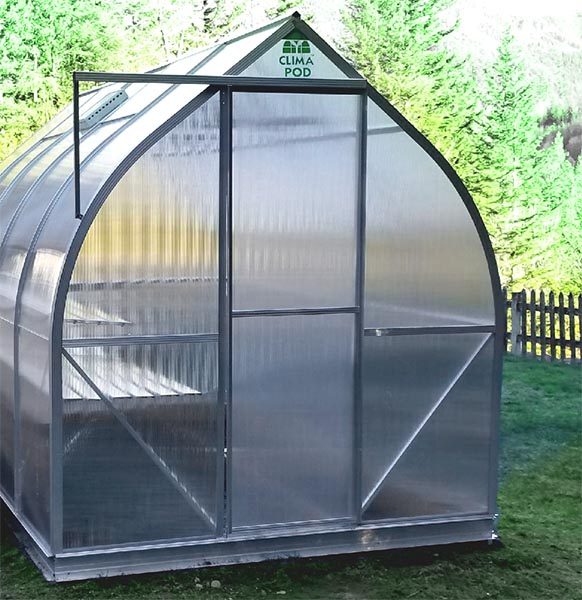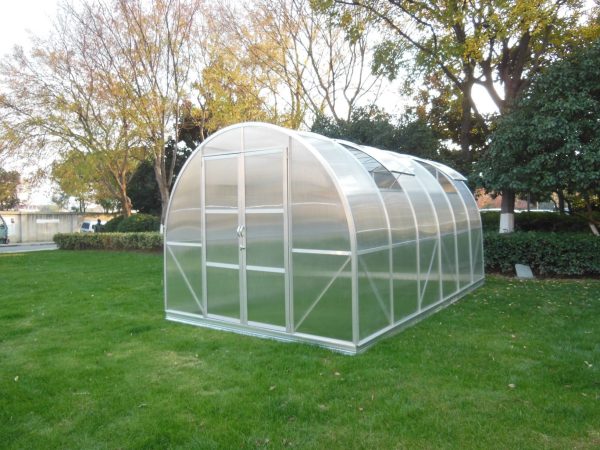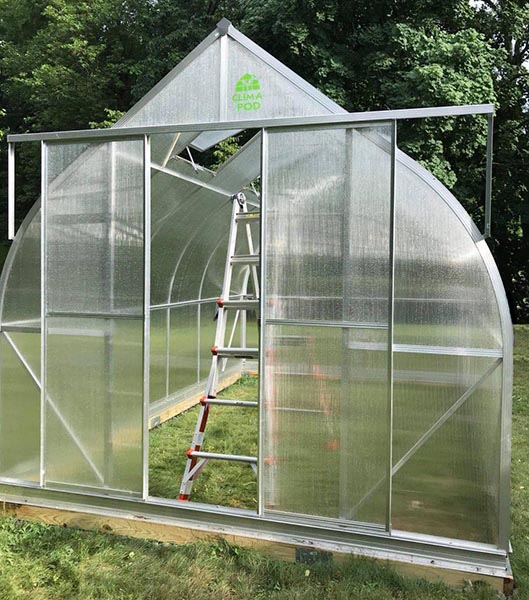Why is overheating dangerous for plants?
No one will deny that frost is dangerous for plants. And the detrimental effect of overheating is sometimes no less than a sudden frost. Photosynthesis slows down, pollen becomes sterile, that is, useless – pollination does not occur. As a result, fruits do not set. That’s why you need to take care of the optimum temperature.
What is the optimal temperature in a greenhouse
You can measure both air temperature and soil temperature. There are special thermometers for this. As for the optimum temperature, it is determined by the requirements of the crop being grown. We can take some average parameters as a basis. For example, a temperature regime that is quite favorable for most ordinary garden plants that are planted in greenhouses.
Before fruiting, the air in the greenhouse in sunny weather should warm up to + 22 °C (72 °F). In cloudy weather, the temperature is +19…+20 °C (67…68 °F), and at night – +15…+16 °C (59…61 ° F). As soon as the plants begin to bear fruit, it can be increased by 2 degrees (both day and night). This is necessary for the fruits to grow and ripen well.
Methods for protecting greenhouse plants from overheating
Now let’s talk about the main thing: how to practically prevent overheating of plants in greenhouses.
Greenhouse shading
For these purposes, you can use improvised items or plant certain plants. Let’s talk about plants first. You should not plant any large trees – a shrub hedge planted at some distance from the greenhouse is enough. Please note: the height of the plants should not be too large. Orient yourself like this: every day the greenhouse should be warmed up by the sun for at least 4 hours!
You can plant plants inside the greenhouse that will create partial shade If, of course, the size of the greenhouse allows it. Usually, gardeners plant passionflower, philodendrons or aristolochia to create shade in the greenhouse.
It is also possible to shade with “improvised objects”, and this also works. Some dilute chalk or clay in water and sprinkle the greenhouse outside with this solution. It dries and shades, albeit a little. And then this layer is easily washed off. The main thing is not to use lime or any paints.
Others throw some branches on top of the greenhouse. A good option, simple and not expensive. But you can do otherwise. If the greenhouse is large, shade nets that are simply thrown over the top will be much more convenient. They are different in density, depending on which they can transmit 25-75% of the light.
In our opinion, and it looks much better than branches or some kind of bedspreads. In general, if the appearance of the greenhouse also bothers you, buy a mesh. Foil threads can be woven into the shadow mesh – as a result, light reflection of up to 50% of the rays is also obtained.
Modern agricultural technologies also have something to offer our gardeners. For example, there are special paints that shade the greenhouse and are washed off by rain after a certain time. Or light and temperature sensors, which, sensing that the air has warmed up above the norm, lower a canopy over the greenhouse.
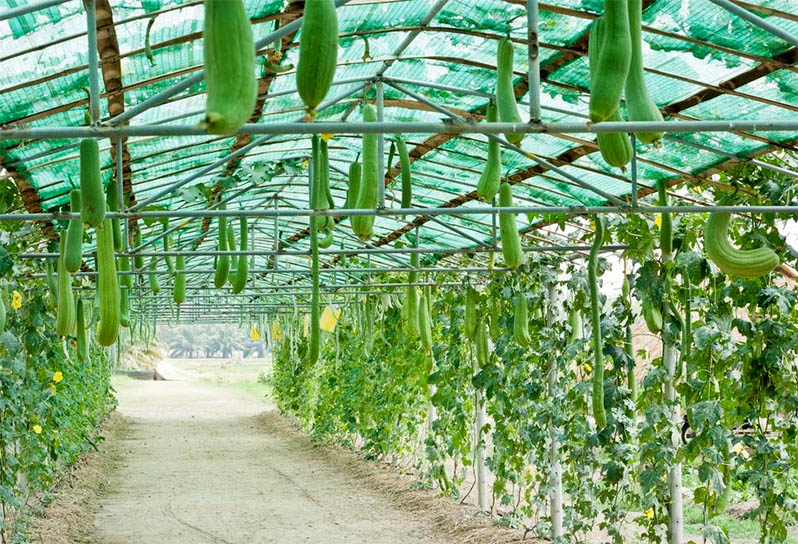
Air ventilation in the greenhouse
First, it is, of course, banal airing. If you have a simple greenhouse covered with polyethylene, be sure to open it from the side so that the wind walks a little. Otherwise, the plants will definitely boil!
If you have a fairly large greenhouse, take care of the windows. It is impossible to have hot air in the greenhouse. And do not think that since there is a door, you can do without other “holes”. Gardeners can’t always leave the door open. What if the neighbor’s cats start eating cucumbers?! Therefore, you need vents.
Well, the second way is to install fans. Sometimes natural ventilation is not enough, and circulation and exhaust fans come to the rescue. They exist for every taste, size and other wishes. But usually fans are still installed in very large greenhouses.
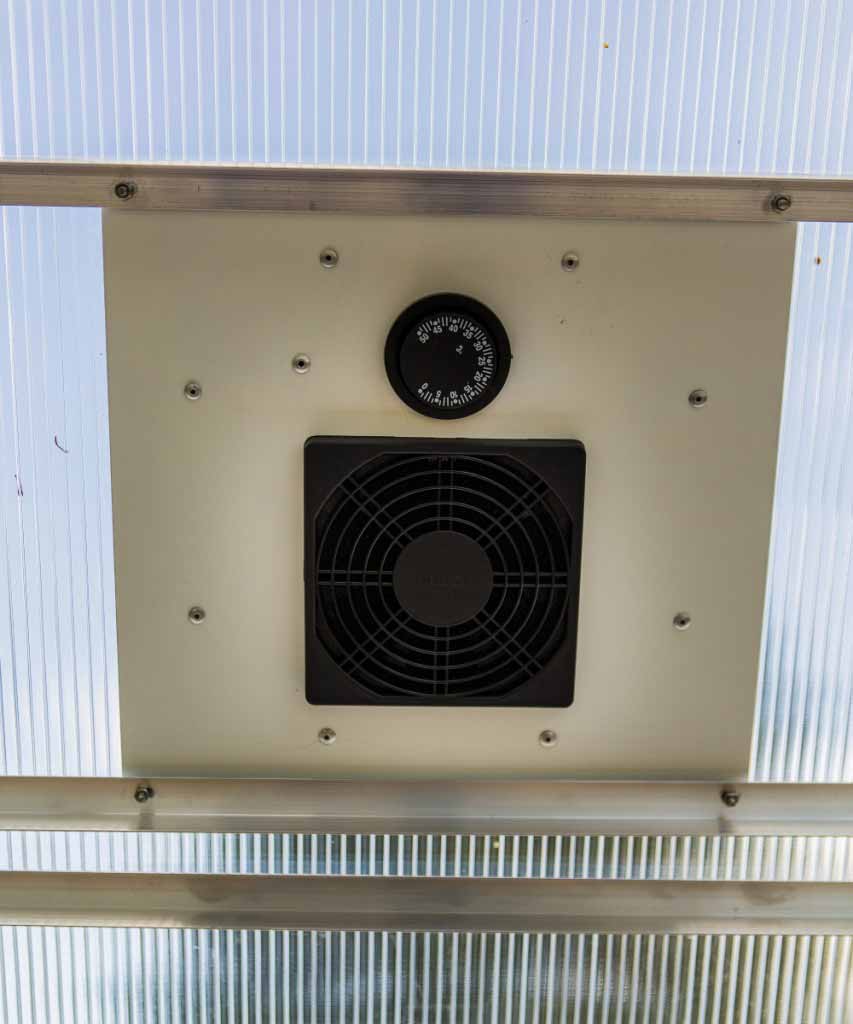
Conclusions: greenhouse plants overheating protection
For the successful cultivation of vegetables in a greenhouse, it is easier to use a hydraulic device. It will automatically open the windows when the temperature at the top of the greenhouse is over 40 °C (104 °F) to prevent the plants from burning, and close the vents when the temperature drops below to conserve the heat needed for the plants to grow. Thus, the problem of adjusting the windows will disappear. The greenhouse can be left unattended for a long time, and the automatic window openers will maintain the optimum temperature for plants at 30-35 °C (86…95 °F).
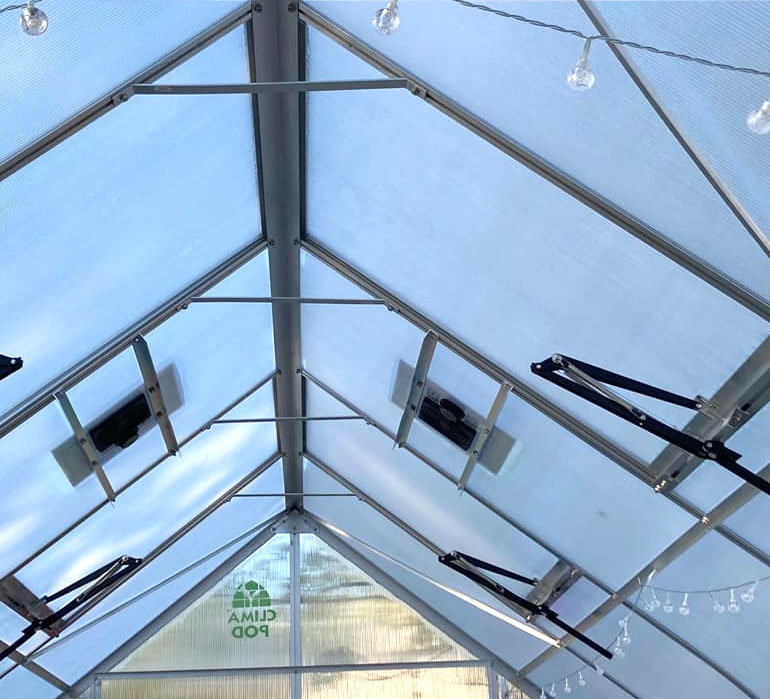
Planting plants to create shade in the greenhouse itself, of course, will help reduce the air temperature in it. However, please note that harmful insects may appear in shaded areas. We hope that with the help of our article, everyone will choose for themselves the most optimal solution to this problem and increase the yield in the greenhouse!

